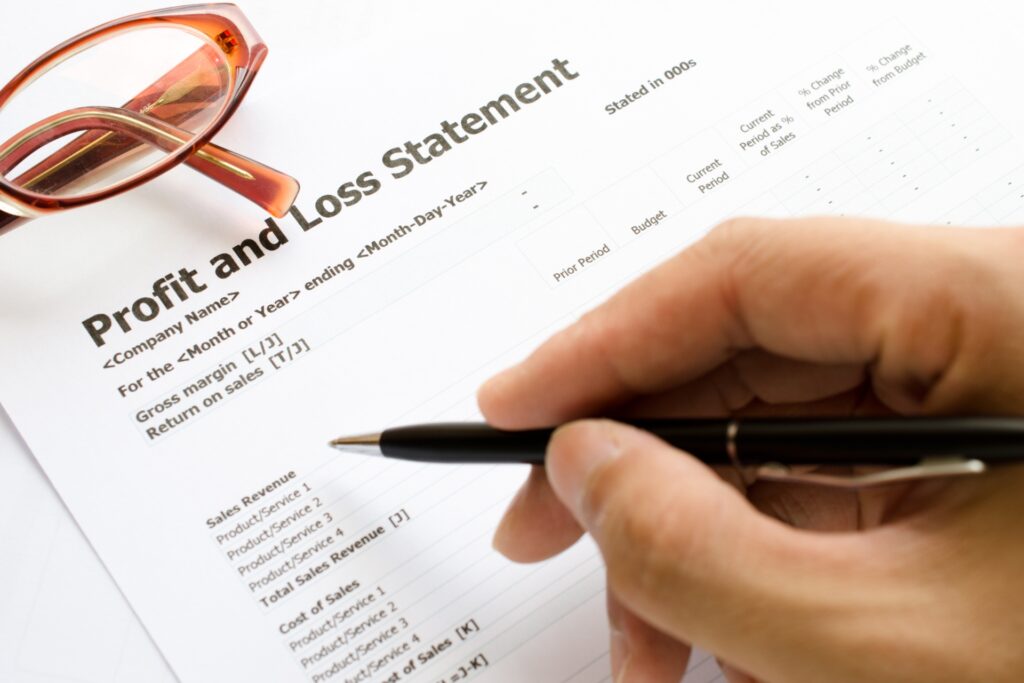A Profit and Loss Statement (P&L), also known as an income statement, is one of the most important financial documents for any business. It provides a snapshot of a company’s financial performance over a specific period, typically a quarter or a year. Understanding how to read and interpret a P&L is crucial for business owners, investors, and anyone involved in financial decision-making. This guide will help you understand what to look for in a P&L statement.
1. Understanding the Basics of a P&L Statement
A P&L statement outlines the revenues, costs, and expenses incurred during a specific period. It essentially shows whether a business is making a profit or operating at a loss. The statement typically includes several key components:
- Revenue: The total income generated from the sale of goods or services.
- Cost of Goods Sold (COGS): The direct costs associated with producing the goods or services sold by the business.
- Gross Profit: The difference between revenue and COGS, showing the profitability before deducting operating expenses.
- Operating Expenses: The costs required to run the business, such as salaries, rent, utilities, and marketing.
- Operating Profit (EBIT): Earnings before interest and taxes, calculated by subtracting operating expenses from gross profit.
- Net Profit: The final profit after all expenses, taxes, and interest have been deducted from the total revenue.

2. Key Areas to Focus On
When reviewing a P&L statement, certain areas warrant closer attention. Understanding these key areas will help you gain insights into the financial health of a business.
Revenue Trends
Start by examining the revenue figures. Is the revenue consistent, increasing, or decreasing over time? In a healthy business, you would expect to see steady or growing revenue. Seasonal businesses might have fluctuations, but overall trends should show positive growth. Compare the revenue with previous periods and industry benchmarks to understand how well the business is performing in its market.
Cost of Goods Sold (COGS)
COGS is a critical figure that impacts the gross profit margin. If COGS is rising faster than revenue, it could indicate inefficiencies in production or rising material costs that the business might not be able to pass on to customers. Monitoring COGS helps ensure that the business maintains a healthy gross profit margin, which is crucial for covering operating expenses and generating profit.
Gross Profit Margin
Gross profit margin is the percentage of revenue that exceeds the COGS. It’s a key indicator of a business’s efficiency in producing goods or services. A high gross profit margin means the business retains more money from each dollar of sales, which can be used to cover operating expenses. Compare the gross profit margin to industry standards to assess competitiveness.
Operating Expenses
Operating expenses include all the costs associated with running the business that are not directly tied to production. These can include salaries, rent, utilities, and marketing costs. High operating expenses can significantly reduce profitability, so it’s essential to monitor them closely. Look for any unusual increases in operating expenses that could signal inefficiencies or areas where costs could be cut.
Operating Profit (EBIT)
Operating profit, or Earnings Before Interest and Taxes (EBIT), is a key measure of a business’s profitability from its core operations. It excludes interest and tax expenses, focusing on the business’s ability to generate profit from its everyday activities. A consistently strong EBIT indicates a healthy, profitable business.
Net Profit
Net profit, or the bottom line, is the most important figure on the P&L statement. It represents the actual profit after all expenses, taxes, and interest payments have been deducted. A positive net profit indicates the business is making money, while a negative net profit suggests it is operating at a loss. When reviewing net profit, consider whether it aligns with the business’s goals and whether it provides a sufficient return on investment.
3. Comparing Against Budgets and Forecasts
One of the most valuable uses of a P&L statement is comparing actual performance against budgets and forecasts. This comparison can highlight areas where the business is over or under-performing and help identify potential issues early. For example, if revenue is lower than forecasted, it may signal problems with sales strategies or market conditions. On the other hand, if expenses are higher than budgeted, it could indicate inefficiencies or unforeseen costs that need addressing.
4. Understanding the Impact of Taxation
Taxation can have a significant impact on the net profit of a business. It’s important to understand how taxes are calculated and deducted from profits. Reviewing the tax expenses on the P&L statement can help you ensure that the business is tax-efficient and compliant with Australian tax laws. Working with an accountant or tax advisor can help optimise the tax position and ensure that the business takes advantage of all available tax benefits.
5. Final Thoughts: Using the P&L to Make Informed Decisions
A P&L statement is more than just a financial document; it’s a tool for making informed business decisions. By regularly reviewing and understanding the key components of a P&L, business owners and managers can identify trends, spot potential issues, and make strategic decisions that drive profitability and growth.
Staying on top of your P&L is crucial for navigating the complexities of taxation, competition, and economic fluctuations. Whether you’re a business owner, investor, or financial manager, a thorough understanding of the P&L statement is essential for ensuring long-term financial success.


